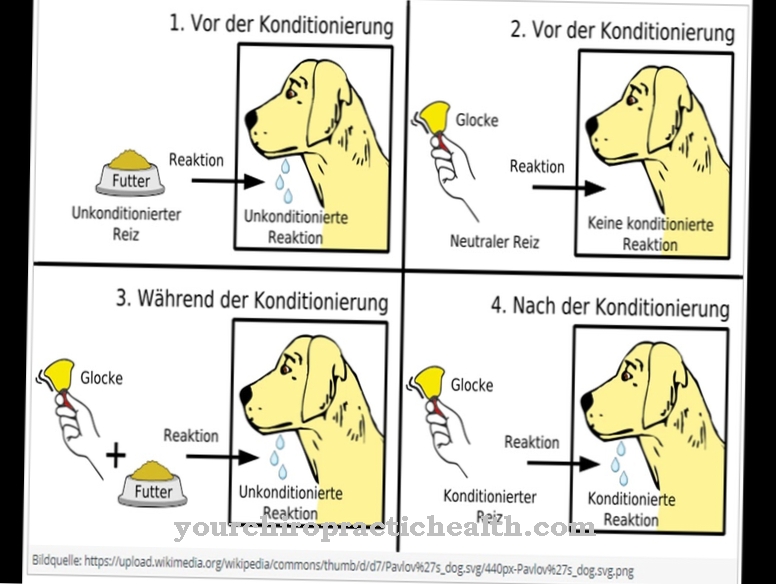The Arthrolysis a surgical procedure to restore full mobility in the case of restricted mobility of large joints. The procedure is typically performed on the knee or shoulder joint.
What is procedure?

Arthrolysis, also known as operative joint mobilization, should fully restore the full mobility of larger joints. Certain orthopedic surgical techniques are required for this, which generally do not require a so-called wide joint opening.
In the vast majority of cases, the surgical procedure can be used in a minimally invasive manner. This surgical technique has several advantages for patients. If the procedure is successful and no further complications are expected, the patient can be discharged on the day of the minimally invasive procedure.
Arthrolysis does not necessarily have to be done under inpatient conditions, but can also be carried out on an outpatient basis. The movement disorders of joints can have many causes, but all of them can be remedied by operative joint mobilization. The definitions of the medical guidelines for this type of operation stipulate that a surgeon should use as little force as possible to bring a joint back into its correct starting position and fix it. Often, however, a certain use of force cannot be avoided in the case of rigid movement restrictions, for example a knee joint.
Function, effect & goals
Movement disorders of large joints can be acute or chronic. The most common indication for arthrolysis of the knee joint concerns elderly people in whom the mobility of a joint is impaired by adhesions. Over time, these scarred adhesions of the connective tissue of a joint lead to a stronger restriction of movement, so that after a certain point in time of immobility, the indication for surgery exists.
Other common causes of restricted mobility of joints are the shrinkage of the joint capsule in the context of degenerative changes in age or osteoporosis. In the case of osteoporosis, bone loss, the surgeon needs a particular instinct to ensure that the mostly very soft bone structure is not further damaged during arthrolysis. Another clinical picture that occurs particularly in advanced age is osteoarthritis, which can also affect the large joints of the body.
However, up to a certain mild degree of osteoarthritis, many patients do not experience any symptoms, but in the further course so-called osteophytes can develop. These are bone extensions, superfluous bone parts without function, which endanger the ability to move a large joint extensively. This is why osteophytes are also a typical indication for minimally invasive joint mobilization.
However, the procedure can also be performed under general anesthesia. Before every arthrolysis, all conservative measures for joint mobilization should be exhausted. However, it is known from research that this is not the case in all patients. One reason for this is that the suffering of many patients due to chronic pain is so high that they urge their treating doctor to carry out this treatment. Scarred changes or shortened capsule parts of a joint are removed or separated during the procedure.
Extended arthrolysis is always used in medical parlance when osteophytes are removed in addition to other factors that restrict movement. The improvement or full restoration of the mobility of a joint is checked during the operation and corrected again if necessary. After such an intervention, the newly established structures are initially considered to be unstable and vulnerable. This is why postoperative follow-up care is of immense importance. The rehabilitation aims at long-term stabilization and can take several months.
The treatment is only considered successfully completed when a joint is fully resilient. However, this unrestricted resilience cannot be fully restored in many, especially older patients.
You can find your medication here
➔ Medicines for back painRisks, side effects & dangers
If the procedure is minimally invasive under local anesthesia, the patient will be informed exactly how the joint should be moved during the operation. Because overstretching or bending during the procedure could ruin the success of an operation.
The use of force during the operation, which according to the guidelines should be prevented as far as possible, is inevitable if the joints or tendons are chronically tense or overstretched. Weeks to months after arthrolysis, a joint can only be subjected to minimal stress. This often means that the so important joint-stabilizing muscles atrophy more and more. The resulting joint instability can make a new intervention necessary, for example if there is only one wrong movement. Only targeted physiotherapy can counteract the excessive breakdown of muscles after arthrolysis.
In addition, many patients complain of moderate to severe pain after such an operative joint mobilization, which can be caused by the internal surgical scar. After the procedure, adequate pain therapy is therefore standard, which must be continued for a long enough time so that it does not become chronic. The term arthrolysis was introduced into medical terminology in 1944 by the German surgeon Hackenbroch. Since then, the process has been further refined and optimized.
Arthrolysis is frequently confused with so-called arthroplasty by laypeople. However, while arthroplasty is about artificially replacing parts or a whole joint, artholysis in all its variants always works to preserve the joints. Artholysis is carried out by specially trained surgeons or orthopedists.












.jpg)



.jpg)










.jpg)
